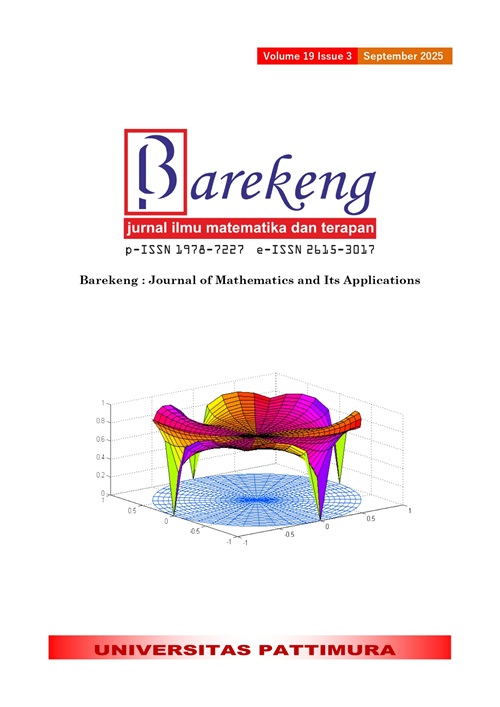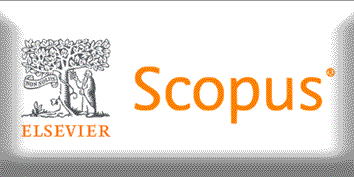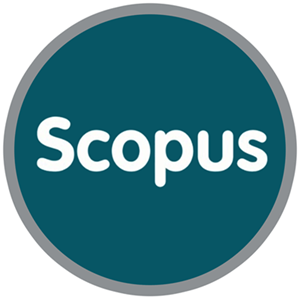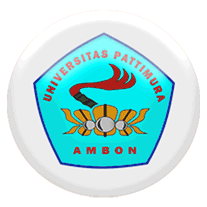APPLICATION OF THE FUZZY TOPSIS METHOD FOR LECTURER CERTIFICATION ASSESSMENT
Abstract
Lecturer Certification (Serdos) is the method of granting educational certificates to lecturers as a formal verification of the speaker's recognition as an expert at a higher level of teaching. In Lecturer Certification, there is an Assessment of Lecturers' Self-Statements in Higher Education Tridharma Performance (PDD-UKTPT), which is divided into three Assessment Elements, namely Teaching, Research and Publication of Scientific Work and Community Service (PkM). The study focuses on teaching assessment. Sam Ratulangi University is one of the Universities Organizing Educator Certification for Lecturers (PTPS) in 2023. The Lecturer Certification assessment at Sam Ratulangi University does not describe the specific assessment range or include the importance weight of each criterion. Thus, this research aims to apply the Fuzzy TOPSIS method as an alternative in the assessment, which determines the importance and weight of each criterion and provides a description of the specific assessment range for each criterion to overcome uncertainty in the evaluation to provide clear guidelines for Serdos assessors in conducting the assessment. The research results regarding lecturer suitability decisions in assessing the Teaching Element. Therefore, it is found that Fuzzy TOPSIS can be used as an assessment method in Lecturer Certification, and it is better suited to handle the uncertainty issues often encountered in lecturer certification assessments. The result of this study provides an excellent accuracy of 100% compared with the manual method.
Downloads
References
K. S. Piscayanti et al., “PENGARUH SERTIFIKASI DOSEN TERHADAP KINERJA PENGAJARAN DOSEN UNDIKSHA,” 2015.doi: https://doi.org/10.23887/jish-undiksha.v4i1.4922
S. Raj, “AN OVERVIEW ON PYTHON PROGRAMMING,” 2019. [Online]. Available: www.jetir.org
Z. Mu’arif, D. A. Afriza, F. Aulia, M. P. Anggelina E, and N. F. Gamayanti, “ANALYSIS OF PRIORITY AREAS FOR HANDLING STUNTING CASES IN SIGI REGENCY USING THE TOPSIS METHOD BASED ON WEB DASHBOARD,” BAREKENG: Jurnal Ilmu Matematika dan Terapan, vol. 18, no. 3, pp. 1411–1422, Jul. 2024, doi: https://doi.org/10.30598/barekengvol18iss3pp1411-1422.
A. Kamsyakawuni, A. Riski, and A. B. Khumairoh, “APPLICATION FUZZY MAMDANI TO DETERMINE THE RIPENESS LEVEL OF CRYSTAL GUAVA FRUIT,” BAREKENG: Jurnal Ilmu Matematika dan Terapan, vol. 16, no. 3, pp. 1087–1096, Sep. 2022, doi: https://doi.org/10.30598/barekengvol16iss3pp1087-1096.
E. F. Pandesingka, L. A. Latumakulita, D. T. Salaki, and N. Nainggolan, “DECISION SUPPORT SYSTEM FOR BANTUAN LANGSUNG TUNAI (BLT) RECIPIENTS USING FUZZY INFERENCE SYSTEM,” in AIP Conference Proceedings, American Institute of Physics Inc., Apr. 2023. doi: https://doi.org/10.1063/5.0137170.
N. F. Ilmiyah, S. Z. N. Al Hasani, and D. Renaningtyas, “COMBINATION OF SAW-TOPSIS AND BORDA COUNT METHODS IN SEQUENCING POTENTIAL CONVALESCENT PLASMA DONORS,” BAREKENG: Jurnal Ilmu Matematika dan Terapan, vol. 17, no. 3, pp. 1521–1532, Sep. 2023, doi: https://doi.org/10.30598/barekengvol17iss3pp1521-1532.
L. A. Latumakulita and T. Usagawa, “A COMBINATION OF BACKPROPAGATION NEURAL NETWORK ON FUZZY INFERENCE SYSTEM APPROACH IN INDONESIA SCHOLARSHIP SELECTION PROCESS: CASE STUDY: ‘BIDIK MISI’ SCHOLARSHIP SELECTION,” in 2017 13th International Conference on Natural Computation, Fuzzy Systems and Knowledge Discovery (ICNC-FSKD), IEEE, Jul. 2017, pp. 1309–1314. doi: https://doi.org/10.1109/FSKD.2017.8392955.
L. A. Latumakulita and T. Usagawa, “INDONESIA SCHOLARSHIP SELECTION MODEL USING A COMBINATION OF BACK- PROPAGATION NEURAL NETWORK AND FUZZY INFERENCE SYSTEM APPROACHES,” International Journal of Intelligent Engineering and Systems, vol. 11, no. 3, pp. 79–90, 2018, doi: https://doi.org/10.22266/ijies2018.0630.09.
N. Kadek, S. Stmik, S. Bali, and J. Raya Puputan, “PENERAPAN FUZZY TOPSIS UNTUK SELEKSI PENERIMA BANTUAN KEMISKINAN,” 2015.
K. al-Sulbi et al., “A FUZZY TOPSIS-BASED APPROACH FOR COMPREHENSIVE EVALUATION OF BIO-MEDICAL WASTE MANAGEMENT: ADVANCING SUSTAINABILITY AND DECISION-MAKING,” Sustainability (Switzerland), vol. 15, no. 16, Aug. 2023, doi: https://doi.org/10.3390/su151612565.
A. Rindengan and Y. Langi, SISTEM FUZZY. 2019.
A. Tiara Suci, H. Asyari, A. Yusuf Prasetiawan, and N. Aji Pratomo, “METODE FUZZY TOPSIS PADA PENGAMBILAN KEPUTUSAN REKRUTMEN KARYAWAN PT. ERPORATE SOLUSI GLOBAL,” 2020.
Q. H. Do, V. T. Tran, and T. T. Tran, “EVALUATING LECTURER PERFORMANCE IN VIETNAM: AN APPLICATION OF FUZZY AHP AND FUZZY TOPSIS METHODS,” Heliyon, vol. 10, no. 11, Jun. 2024, doi: https://doi.org/10.1016/j.heliyon.2024.e30772.
S. H. Anbarkhan, “A FUZZY-TOPSIS-BASED APPROACH TO ASSESSING SUSTAINABILITY IN SOFTWARE ENGINEERING: AN INDUSTRY 5.0 PERSPECTIVE,” Sustainability (Switzerland), vol. 15, no. 18, Sep. 2023, doi: https://doi.org/10.3390/su151813844.
V. Krismo Anggoro, A. Riski, and A. Kamsyakawuni, “PENERAPAN METODE FUZZY TOPSIS SEBAGAI SISTEM PENDUKUNG KEPUTUSAN PEMILIHAN MAHASISWA BERPRESTASI APPLICATION OF FUZZY TOPSIS METHOD AS A DECISION SUPPORT SYSTEM FOR ACHIEVEMENT STUDENT SELECTION,” 2023.doi: https://doi.org/10.19184/jid.v24i1.16792
N. H. Baharin, N. F. Rashidi, and N. F. Mahad, “MANAGER SELECTION USING FUZZY TOPSIS METHOD,” in Journal of Physics: Conference Series, IOP Publishing Ltd, Aug. 2021. doi: https://doi.org/10.1088/1742-6596/1988/1/012057.
F. N. Izdhihar, E. Alisah, and A. Abdussakir, “METODE FUZZY TOPSIS SEBAGAI SISTEM PENDUKUNG KEPUTUSAN DALAM MENENTUKAN PEGAWAI BERPRESTASI,” Jurnal Riset Mahasiswa Matematika, vol. 2, no. 6, pp. 233–246, Sep. 2023, doi: https://doi.org/10.18860/jrmm.v2i6.22024.
A. W. Septyanto, F. E. Nastiti, J. Maulindar, and D. Hartanti, “FUZZY TOPSIS SYSTEM UNTUK PEMILIHAN ATLET BALAP SEPEDA TERBAIK,” Jurnal Dinamika Informatika, vol. 9, no. 2, 2020.
S. NǍdǍban, S. Dzitac, and I. Dzitac, “FUZZY TOPSIS: A GENERAL VIEW,” in Procedia Computer Science, Elsevier B.V., 2016, pp. 823–831. doi: https://doi.org/10.1016/j.procs.2016.07.088.
S. Basriati et al., “PENERAPAN METODE FUZZY TSUKAMOTO DALAM MENENTUKAN JUMLAH PRODUKSI TAHU,” Jurnal Sains, Teknologi dan Industri, vol. 18, no. 1, pp. 120–125, 2020.doi: https://doi.org/10.24014/sitekin.v18i1.11022
W. E. Sari, M. B, and S. Rani, “PERBANDINGAN METODE SAW DAN TOPSIS PADA SISTEM PENDUKUNG KEPUTUSAN SELEKSI PENERIMA BEASISWA,” Jurnal Sisfokom (Sistem Informasi dan Komputer), vol. 10, no. 1, pp. 52–58, Feb. 2021, doi: https://doi.org/10.32736/sisfokom.v10i1.1027.
Copyright (c) 2025 Stephanie Marceline Raintung, Luther A. Latumakulita, Franky Paat, Irwan Karim, Steven Sentinuwo, Noorul Islam

This work is licensed under a Creative Commons Attribution-ShareAlike 4.0 International License.
Authors who publish with this Journal agree to the following terms:
- Author retain copyright and grant the journal right of first publication with the work simultaneously licensed under a creative commons attribution license that allow others to share the work within an acknowledgement of the work’s authorship and initial publication of this journal.
- Authors are able to enter into separate, additional contractual arrangement for the non-exclusive distribution of the journal’s published version of the work (e.g. acknowledgement of its initial publication in this journal).
- Authors are permitted and encouraged to post their work online (e.g. in institutional repositories or on their websites) prior to and during the submission process, as it can lead to productive exchanges, as well as earlier and greater citation of published works.






1.gif)



